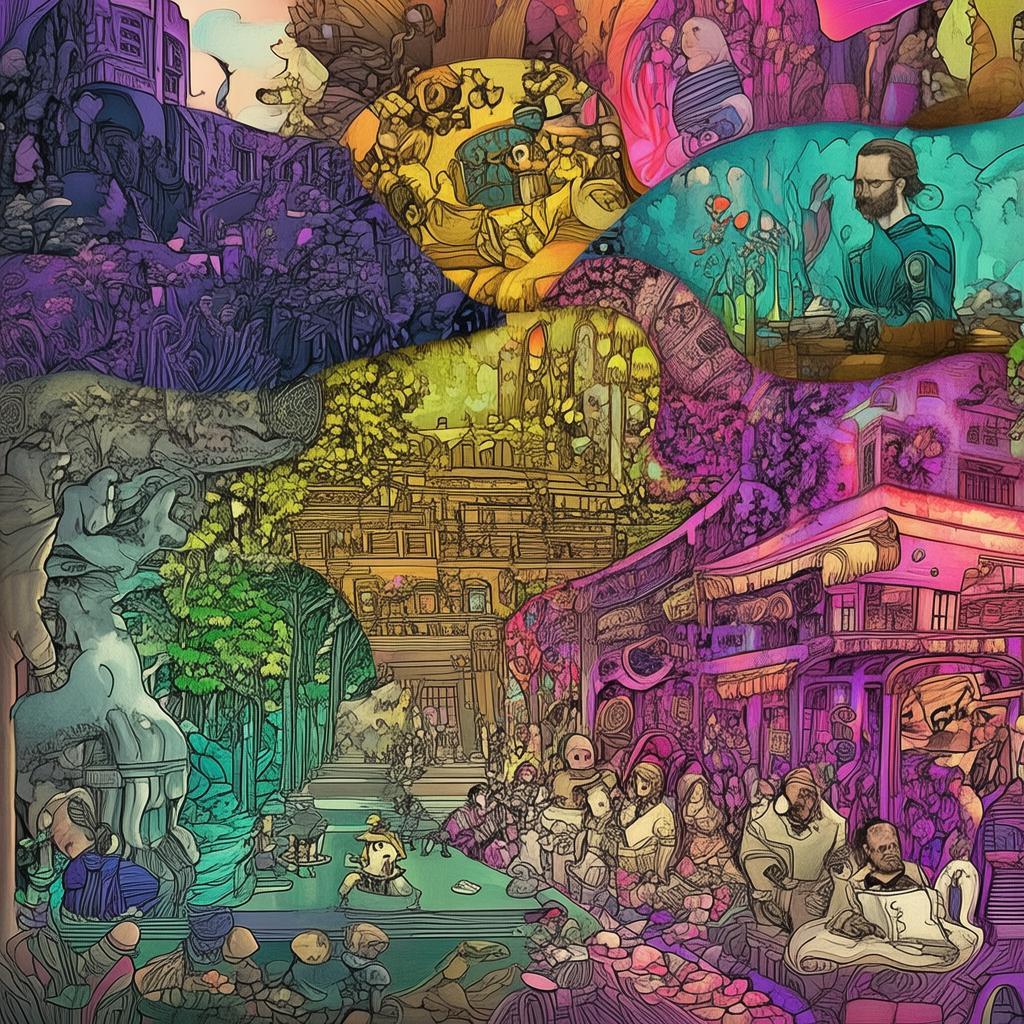The Enchanted Mirror: A Monk's Reflection on the Soul
In the heart of the ancient mountains, where the whispering winds carried the secrets of the ages, there lay a secluded temple known only to a few. It was here, amidst the serene beauty of the forest, that the monk, Ananda, had found solace in the quietude of meditation. His days were spent in contemplation, seeking the truth within himself and the world around him. Yet, even in the tranquility of his retreat, the echoes of a question plagued his mind: What is the true nature of the soul
One evening, as the sun dipped below the horizon, casting a golden glow over the temple grounds, Ananda ventured out to the edge of the forest. It was there, in a clearing bathed in twilight, that he stumbled upon an object unlike any he had seen before—an enchanted mirror, half-buried in the earth. Its surface was etched with symbols, pulsating with an otherworldly light.
Curiosity piqued, Ananda knelt down and brushed away the earth, revealing the mirror's surface. As he looked into the depths, he saw not his own reflection, but a paradoxical vision of himself and another, both identical in appearance but distinctly different in essence. The figure in the mirror was a younger version of himself, with eyes reflecting a youthful innocence that his own eyes no longer held.
Intrigued by the mirror's power, Ananda reached out and touched it. The mirror responded, shattering into a thousand pieces, each fragment glowing with an inner light. The monk was drawn into the fragments, and as he did, he felt himself transported to a realm of pure consciousness, devoid of form or space.
Within this realm, Ananda's younger self appeared before him. "I am you," the younger monk said, his voice echoing in the void. "I am your soul, the essence of your being. And here, in this place, we shall confront the paradox that has plagued you for so long."
As the two monks conversed, the truth of their existence unfolded. Ananda learned that the mirror was not just a mere object but a portal to the soul's true nature. The younger monk represented the uncorrupted, pure essence of the soul, while the older monk embodied the accumulated experiences, desires, and regrets that clouded his perception.
The older monk, reflecting on his life, realized that he had become a prisoner of his own thoughts and actions. The younger monk, in contrast, was unburdened by the weight of the past, free to see the world as it truly was. This realization struck a chord within Ananda, and he found himself asking the younger monk, "How can I transform myself, to become like you?"
The younger monk smiled, his eyes alight with the wisdom of the ages. "Transformation begins within. Look deep into the heart of the mirror, and you shall see the path to your true self. It is not a matter of changing your appearance or even your thoughts, but of changing your perception."
Ananda looked back into the mirror, this time with a new perspective. He saw not just the two monks, but a spectrum of souls, each at different stages of their own journeys. Some were bound by their desires, others by their fears, and still others by their compassion.
As Ananda reflected on the myriad of souls before him, he understood that the true nature of the soul was not a fixed state but a continuous process of transformation. It was a dance between the pure essence and the accumulated experiences, a paradox that defined the human condition.
With newfound clarity, Ananda felt a shift within himself. The weight of his regrets and the chains of his desires began to loosen. He realized that the true power of the mirror was not in its ability to show him a vision of his soul, but in its capacity to reveal the potential for change.
As he returned to his body, the mirror's fragments reassembled themselves, their light dimming as the portal to the soul's realm closed. Ananda sat down, his mind clear and his heart at peace. He knew that his journey had only just begun, and that each day would be an opportunity to confront the paradox of his soul and transform himself anew.

The next morning, Ananda rose with a newfound determination. He began his day not with the aim of escaping the world, but of embracing it. He sought to understand the paradoxes that defined the human experience, to embrace the light and shadow of his own soul, and to help others do the same.
In the days that followed, Ananda's teachings spread throughout the temple. He spoke of the enchanted mirror, not as a mystical object, but as a symbol of the soul's journey. He encouraged his fellow monks to look within, to confront the paradoxes that plagued them, and to transform themselves through the power of self-discovery.
As the word of Ananda's teachings spread, the temple became a beacon of hope for those seeking enlightenment. And in the heart of the ancient mountains, the enchanted mirror remained, a silent witness to the transformative power of the soul's journey.
? Ultimate Goal: To create a story that captivates, inspires, and provokes reflection, encouraging readers to explore the depths of their own souls and the paradoxes that shape their existence.
✨ Original Statement ✨
All articles published on this website (including but not limited to text, images, videos, and other content) are original or authorized for reposting and are protected by relevant laws. Without the explicit written permission of this website, no individual or organization may copy, modify, repost, or use the content for commercial purposes.
If you need to quote or cooperate, please contact this site for authorization. We reserve the right to pursue legal responsibility for any unauthorized use.
Hereby declared.









